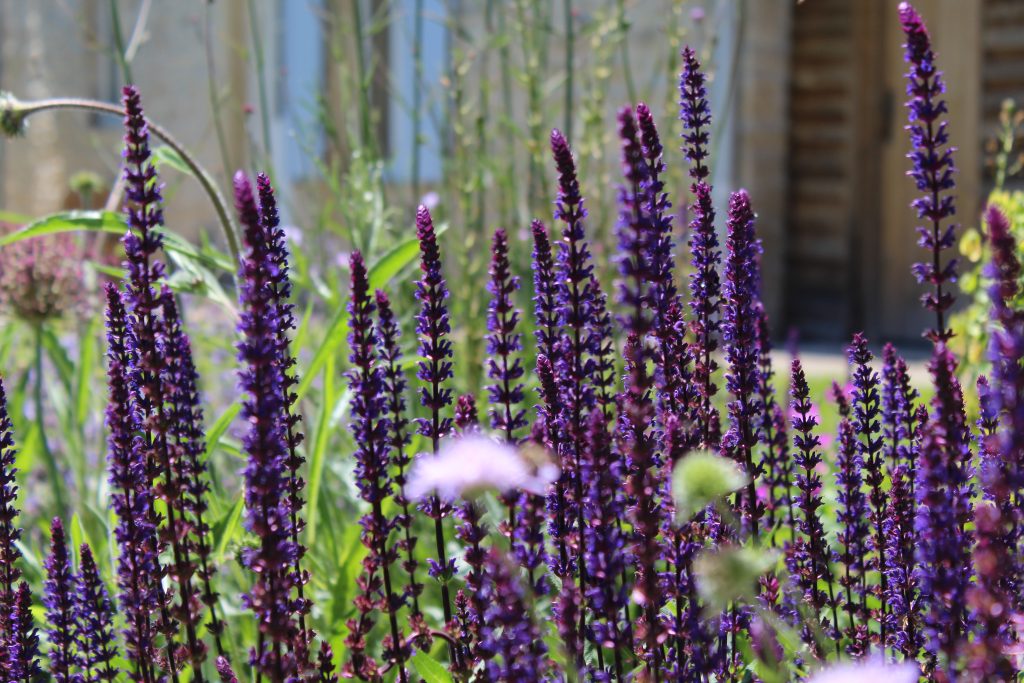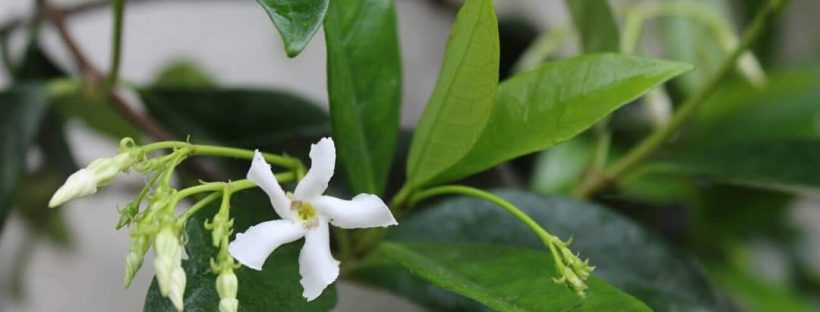Summer is here! Day length is at its maximum and the garden reaches peak growth this month. With many now working from home more often than in the past there is more time to get in the garden, just don’t forget to take time to enjoy it too! Here is your June garden to do list:
Water
Since the 13th May 2022 the Vienne department has been under a ‘hosepipe’ ban, prohibiting the use of irrigation of lawns and filling of pools, amongst other things, from the mains water supply. The ban is not entirely total: depending on the activity (such as fruit and veg production in the potager) the ban is only in place during certain hours. Familiarise yourselves with the relevant restrictions for your commune, or check with your local Mairie or water utility, to avoid getting yourself into trouble with the authorities.
Consider your water saving strategies, such as investing in a water butt. If rules permit, water early in the morning or late in the evening to maximise your watering efficiency and minimise water loss to evaporation. Mulch the soil between plants with compost or wood chips. Top up if you have done this already earlier in the year.
If you lose any plants this year due to the drought, reconsider your plant choices and select a new planting better suited to the location and climate. Perhaps it is time to let those hanging baskets go, or dispense with those water hungry cannas and replace with something that has less water demands and will better cope with dry periods?
Lawns
Continue to mow at a longer length for improved drought tolerance. Don’t be alarmed if the lawn starts to go brown this month, if it hasn’t already because of the drought. It is part of the natural process and it will return when the rains do in autumn. If you have already been mowing on your highest setting you may just find that your lawn lasts a bit longer than others.
Box hedges
Remember to continue inspecting your box hedges for box tree moth caterpillars. Last year seemed to have been a relatively quiet year as far as the box moth is concerned, but thus far they seem to be back with a vengeance this year. If you identify its caterpillars are present the preferred option is to remove them by hand and dispose of them. For small topiaries etc this is practical. For large hedges treat with Bacillus thuringiensis (a natural soil-borne bacteria) to kill the caterpillars. Apply the treatment in the early morning to prevent it from evaporating before it can take effect. Use only when box tree moth caterpillars are present to target this species only and ensure minimal destruction of other insects.
Use in conjunction with a pheramone trap to really interrupt the lifecycle of the box tree moth and maximise efficacy.
Weeds
As with May, there are weeds aplenty. If left unchecked in May they will undoubtedly be more mature and therefore easier to identify and, with the exception of a few, easier to remove.
Keep at the weeding little and often to break the cycle. If you allow weeds to go to seed now, you will find you have colossal amounts of weed come the autumn when it all germinates in the rains.
Bramble is fairly easy to dig out, but persistent weeds with invasive creeping roots such as bindweed are a pain and it is important to keep on top of things to prevent the weeds swamping your desired plants and setting seed.
Follow my May advice to keep weeds at bay.
Deadheading
Deadheading plants is not essential for the health of a plant, but regular removal of the spent flowers of some plants prevents the plant from producing seed and encourages them to continue producing flowers. Plants suitable for this sort of pruning at this time of year includes Roses, Penstemons, Erodium, Lupins, and herbaceous Salvias.
Not all plants repeatedly flower, but if you feel the decaying flower petals might spoil the appearance of an arrangement you can remove them anyway. It is a matter of choice but some might prefer to remove Lilac, Guelder Rose, tree Peony or herbaceous Peony flowerheads. Myself, I rather like the structural appearance of Peony seedheads once the ugly phase of petal dieback is over and done with and so I leave them.
Sometimes it is advisable to remove spent flowers to avoid the plant putting its energies into seed production for a good flowering display the following year. Plants suitable at this time of year are typically the bulbous plants and include Tulips, Alliums, Camassia.

Equally, some are better left as they are necessary for next year’s generation of plants, usually annuals and biennials, such Nigella damascena, Cow Parsley and annual Poppies, like Papaver somniferum above.
Prune late summer flowering herbaceous plants

Often referred to as the ‘Chelsea Chop‘ (so called because this form of pruning coincides with the annual RHS Chelsea Flower Show), pruning at the end of May/start of June of late summer flowering herbaceous perennials delays flowering, but has the benefit of more plentiful flowering albeit later in the year thus extending the flowering season. If your perennials have gotten a bit floppy as a result of spring rains and storms giving them this treatment will also have the helpful side effect of producing slightly stockier plants more resistent to collapse.
Simply prune the herbaceous perennials back by about a third to just above a leaf node.
You can get creative with this method and prune some of your perennials now and leave others. This way you can stagger the flowering, giving you some flower now and more later in the year.
Plants suitable for this sort of treatment includes Sedum (now Hylotelephium), Aster (now Symphyotrichum), Echinacea, Rudbeckia, Helenium and Dahlia. For details follow this link.
Plants such as herbaceous Salvia and Nepeta may well have finished flowering by now and so would benefit from this treatment also to encourage a second flowering later in the year.
Prune topiary
Sharpen up topiary by pruning them now. Topiary can be pruned this time of year just as long as there are no birds nesting in them, so check before getting started.
Check Buxus topiary for Box moth caterpillar (‘Pyrale’ in French). Actually seeing the caterpillars aside, their presence is usually indicated by webbing binding leaves together and nibbled leaves. Remove caterpillars by hand where practicable, or spray with Bacillus thuringiensis if you have a large amount of box topiary or hedging.
Cherry trees
If you have a cherry, or any other tree from the Prunus family, that requires pruning now is the time to do it. “Never prune before June” as the saying goes. Cherries are vulnerable to fungal attack and mid-season pruning combined with a rising sap is believed to repel any fungal spores from pruning wounds.
For the health of the tree the canopy needs some maintenance every few years to keep the canopy open. Do so by removing all ingrowing and crossing branches. If the tree seems fine, then simply leave it alone. There is no need to prune simply for the sake of it and sometimes it is just better to leave them alone, espectially the cherry family.
In the potager
You can start harvesting this month, if you haven’t been already. Quick growing crops like lettuce and radishes, as well as summer rasperries, courgettes and many more will be ripening fast. You may even start seeing beans and tomatoes ripening around the end of the month. Get to them before the birds do, or use a netting or fleece to protect the fruit until you are ready to harvest.

Prune grape vine tendrils back so that you have two clusters of grapes forming on new growth. Doing so will improve light access to the forming fruit and concentrate the plant’s energies on producing fewer, but larger and better, fruits. Aim for quality, not quantity.
Prune out ingrowing and crossing branches from apples/pears etc to improve light access to fruit, maintain plant health and aid fruiting spur formation. On espaliers and fans prune out vertical growths back to just a couple of leaves from the main structure/existing spurs for future fruit production. Prune out any ‘suckers’ growing from the base also.
Don’t be alarmed if your apples and pears start to jettison some fruit this month. This is known as the ‘June Drop‘. If the tree has an excess of fruit this is the tree’s way of selecting which fruit it can sustain to maturity and those it cannot. After the June Drop, you can take things one step further if you want by selectively removing some fruits from apples, pears etc to allow the plant to produce larger and better, albeit fewer, fruits, rather than many sub-standard fruits. One to two fruits per cluster is ideal for most fruit trees. Remember: quality, not quantity. Removing fruits now can also prevent branch breakages from the weight of an excessive amount of fruit.
Remove from tomato plants all growth growing diagonally between the main stem and the leaves. If you want to make more tomato plants for free, treat these as you would any other cutting and pot them up or place in a glass of water. They will root quickly at this time of year. Ensure you are watering your tomatoes evenly (both in frequency and amount) to avoid splitting any fruits that are forming.
Plant of the month

There are so many plants in flower this month, but a personal favourite of mine is Salvia nemorosa and its hybrid friends. Herbaceous Salvias come from right across the grasslands of Europe, which tells you everything you need to know about this plant: They flower early to beat the grasses normally around them, have good upright structure, are well adapted to the climate and are drought tolerant. It is bullet proof, tolerant of a range of soils, bees adore it, and thus is excellent value in the garden: S. nemorosa flowers twice a year if pruned after the first flush of flower. They can be vulnerable to snails very early in the year, but once they burst into life in April this isn’t really a problem, especially if you are lucky enough to have hedgehogs, frogs and toads frequent your garden. In the main, they range from blue to deep purple, which can be a useful ‘link’ colour. White and pinks also exist if that is what you’re looking for. Many of them should be planted in full sun only, as they have a tendency to lean to ‘reach’ for the light if not.
Planting design is one of the cornerstones of our business. If you would like professional advice on planting options, sourcing and planting, please get in touch here.

No responses yet